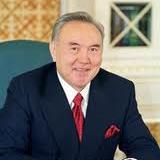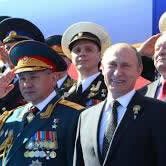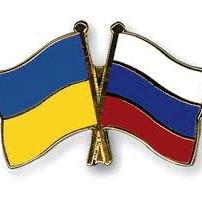(Monkey Cage/WP) Presidential elections were held in Kazakhstan on April 26, 2015. Incumbent president Nursultan Nazarbayev was easily reelected with more than 97 percent of the votes. The majority of the electorate understood that the election was organized to be a confirmation vote for the president. No one was expecting any surprises and there were none. Like past elections, the OSCE did not consider these polls to be “free and fair.” The Central Elections Commission did improve its technical and administrative expertise and skills, but no organized opposition was able to offer real political alternatives, and the country ranks low in media freedom indexes.
Yet these elections are very revealing, both of the current situation in the country, with its ongoing economic crisis, and of the mechanisms authorities uses to legitimize themselves.
Like all governments in the post-Soviet space, the legitimacy of the Kazakhstan regime relies on patronage mechanisms — in other words the redistribution of assets among colluded political and business elites. Potentially even more important is the ability of the government to maintain consensus around the authorities’ selected development trajectory. Soft power conventionally is used in foreign policy; Joseph Nye described it as “the ability to affect others to obtain the outcomes one wants through attraction rather than coercion or payment.” But soft power also works in domestic policy. Soft power regimes are able to build a plausible narrative about the country’s path of development and gain substantial support from the population (as studied by political scientists working on Kazakhstan such as Edward Schatz, from the University of Toronto). In this case, the government does not need coercive tools to remain in place and can invest more energy into strengthening its soft power tools.
Kazakhstan’s success is a model for the entire region. The overwhelming majority of the population supports the country’s so-called multi-vector foreign policy and Kazakhstan’s ability to brand itself internationally through its support for multilateralism and regional initiatives, stance on denuclearization and its prestige campaigns in the West and Asia. Thepopulation also approves of the internal management of state sovereignty: the “good neighborhood” policy with neighbors, border delimitation treaties signed with each of them, a state narrative that remains inclusive in terms of citizenship and national identity by celebrating the country’s multinational character, a religious policy that gives equal rights to official Islam and Orthodoxy, and the prohibition of expressing overly radical points of view, particularly regarding Kazakh ethno-nationalism.
That this domestic soft power is accompanied by what Western countries consider violations of human rights or democratic values (media freedom, religious freedom) weighs little on the perceptions of most of the population. As seen from the ground, what counts most is the overall stability of the majority, not the individual rights of those who do not share the general consensus. This realization is one of the great successes of the Kazakhstani regime. The consensus is based on a shared hierarchy of priorities between the political authorities and the population: namely state sovereignty, social stability and economic development. This contributes to diminishing other, less consensus-based aspects of the regime: corruption at all levels of the state, aging high-level elites outranking young and ambitious middle-level ones, persistent large gaps between the development levels of some regions and of urban and rural areas, and the sentiment among some young people, especially in the western oil-producing regions, of having no access to upward mobility.
It is here where the regime’s successful legitimacy intersects with the current economic situation, which directly threatens the social trust established between the authorities and the population. The population is expecting to gain steadily increases in living standards and to reach European levels of well-being by mid-century (the associated state program is called Kazakhstan-2050).
However, unforeseen difficulties have piled up. Economic crisis conditions became visible in 2014, but have gotten worse in 2015, with growth slowing to an estimated 1.5 percent for the year, even though the Kazakhstan-2050 vision is based on assumptions of at least 5 percent annual growth and inflation stabilized at 3-4 percent. In early 2014, the overnight devaluation of the national currency, the tenge, rattled the population and accelerated the dollarization of the economy. The giant Kashagan oil field, the world’s largest oil field discovery in the last 30 years but also the world’s most expensive oil project at nearly $50 billion, is not expected to resume production until 2017, after a decade of postponement, and the authorities and foreign investors will require high oil prices to generate adequate returns on investment.
To this add the current difficult situation of Kazakhstan’s foremost partner and ally, Russia, in relation to the Ukrainian crisis. The Western sanctions, Russian counter-sanctions, and the Eurasian Economic Union project overall, which does not seem now to be a positive for Kazakhstan’s modernization and diversification strategy, partly jeopardizes the country’s posture in Eurasia. Moscow’s position is a threat to Astana finding the right balance between the historical trend of supporting any regional integration project and securing Kazakhstan’s own distinct voice and development trajectory.
The Kazakhstani authorities have combined stimulus policies and austerity measures. They injected some $5.4 billion from the Samruk-Kazyna sovereign wealth fund to boost the economy, but also have set aside parts of state budgets and reduced operating expenses, including at “prestige” institutions such as Nazarbayev University and the 2017 Astana international expo. The Nurly Zhol (Shining Path) economic project, billed as a countercyclical approach to the crisis, including an ambitious new approach to regional and national transportation infrastructure, has helped. Still it has not yet been enough to dampen the crisis spiral, symbolized by Standard & Poor’s cutting Kazakhstan’s sovereign ratingfrom BBB+ to BBB, and the government is working to lay out a further round of anti-crisis measures.
In such a context, holding early presidential elections makes sense. The objective was to reconfirm the social contract between the authorities and the population. Nazarbayev needs popular legitimacy to reassert Kazakhstan’s sovereignty in the face of Russia and the Eurasian Union project, and to be sure outsiders cannot instrumentalize internal political dissent. It also was necessary to prepare the country’s political future. Nazarbayev is wise enough to know he needs to prepare his succession, and that a highly centralized and personalized regime can be jeopardized when its historical leader departs. He thus announced several reforms for after his reelection, including strengthening the parliament, judicial independence, and police accountability. The current oil crisis could also drive the authorities to engage even more actively in a diversification pattern toward “green” energy, new technologies, and the services economy.
Nazarbayev got what he asked for: reaffirmation of his extensive popular support and social trust that the chosen development path is what is best for the country given its regional environment and structural strengths and weaknesses. The question now is whether the authorities can hold up their end of the social contract by taking on the new generation of issues the country faces.
– – – – – – – – –
See the original post at The Monkey Cage











